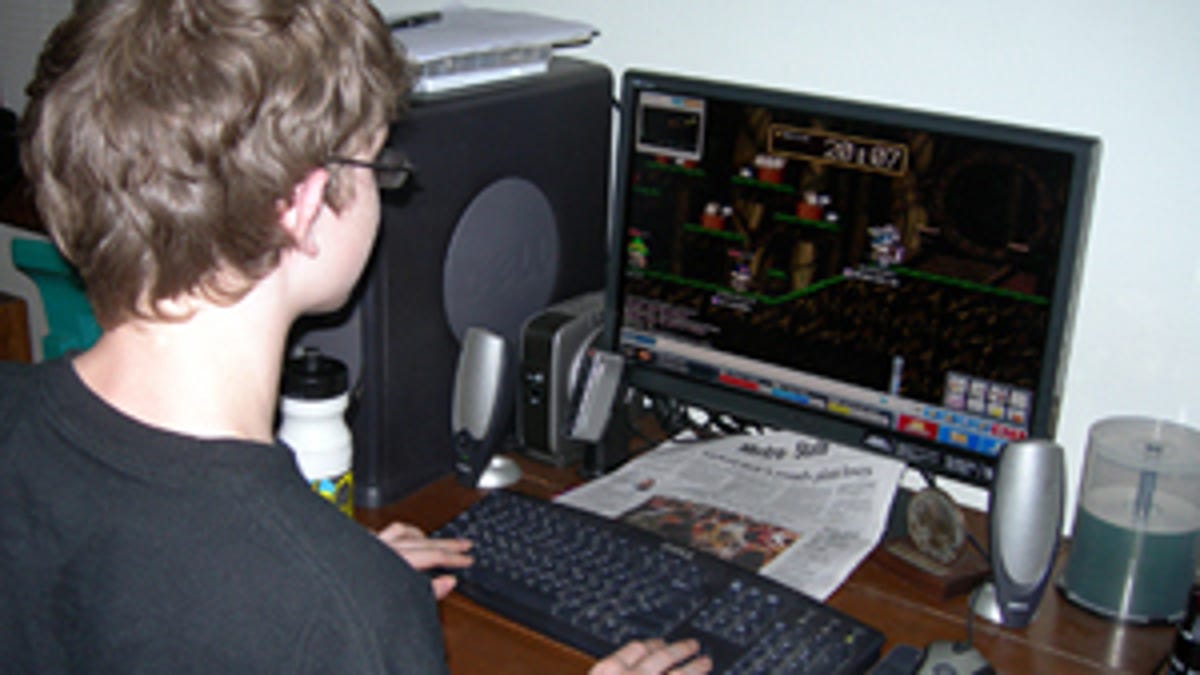Keep your kids safe in Windows 10
How to set up parental controls in Windows 10 and Windows 8.

The Internet is a scary place even if you don't have children. But for those of you who do have children, Microsoft has built parental controls into Windows 10 (and Windows 8) that can help you track what your kids are doing online, limit their screen time across multiple devices and prevent them from bankrupting you with in-app purchases.
To set up parental controls, each family member will need to have their own Microsoft account and personal login. Here's how to add family members (adults, who will be able to see and manage children's accounts; and children) to your Windows 10 PC.
Once everyone in your family has their own account and personal log-in, adults can see and manage children's accounts by opening the Settings menu and going to Accounts > Family & other people and clicking Manage family settings online. This link will take you to Microsoft's website.
In the Family section of your Microsoft account, you will see an overview of your family, children and adults. Next to each child account, you will see a list of options and settings, as well as the option to add money to the account so your children can purchase apps and upgrades from the Windows Store. The limits you set for children's accounts will apply across all of the devices they use with their Microsoft login, not just the device you're currently using.
If you want to utilize parental controls, you will need to set them up manually -- features like activity reporting, screen time limits, and website blocking are all turned off by default.
Activity tracking
To turn on activity tracking, click Check recent activity next to your child's account and turn Activity reporting on. This will allow you to see which websites your child visits in the Internet Explorer or Edge browser, see which apps and games your child uses while they are logged in, and track how much time your child spends using devices with their personal log-in.
Activity tracking blocks InPrivate Browsing so your child cannot browse the web in secret, but it does not block -- nor can it track -- other web browsers such as Google Chrome or Mozilla Firefox. If you want to make sure your kid only uses Internet Explorer or Edge, you will need to manually block other web browsers in the Apps, games & media section.
Web browsing
If you want to prevent your child from viewing inappropriate websites and/or search content, you can turn on website blocking by clicking More next to their account, clicking Web browsing and then turning on Block inappropriate websites. This blocks adult content and turns SafeSearch on in the Internet Explorer and Edge browsers.
If you want to make sure certain websites are always blocked -- no matter what their content rating is -- add the website to the Always block these list. You can also add websites to the Always allow these list, and you can even set up the controls so that your child can only see the websites on that list. To do this, check the box next to Only see websites on the allowed list.
Again, website blocking will only work on Internet Explorer and Edge -- if you let your kid use a different browser, this setting will have no effect on that browser.
Apps, games & media
To limit access to apps, games and media, click the More button next to your child's account, click Apps, games & media, and turn Block inappropriate apps and games on. Microsoft blocks mature movies and games from all children's accounts by default, but this setting lets you limit apps and games by a specific age (from 3 years old to 20 years old).
You can also block specific apps and games, regardless of age appropriateness, by going to Recent activity.
Screen time
Plenty of parents want to limit their kids' screen time, and parental controls make this easy. Click Screen time next to your child's account and turn Set limits for when my child can use devices on.
There are a couple of different ways you can limit your child's screen time. You can set active hours (e.g. 7 a.m. to 10 p.m.) or you can block access completely on certain days of the week. You can also set total time limits for each day. These time limits range from 30 minutes to 12 hours (in 30 minute increments), and you also have the option to block access completely or allow unlimited access. Screen time is tied to your child's account -- not to any specific device -- so your child will only be able to log in to his or her account for the time you allot, during the hours you set.
Purchase & spending
Children's accounts cannot be directly linked to a money account (such as a credit card or a debit card). If you want your kids to be able to buy apps, games or media, you will need to add money to their account. You will be able to see the purchases they make going back 90 days (any older and you'll need to log in to their account).
To add money or check up on what they've been buying, click Purchase & spending next to their account name. You can add between $10 and $100 to their account by clicking Add money to their account.
Find your child
If your child has a Windows 10 mobile device, such as a phone or a tablet, you can track their device's location using Find your child. To turn this on, your child will first need to sign into a mobile device (you cannot turn this on from a non-mobile device) and then you can click More > Find [child] on a map and turn Show the location of your child's device on.

